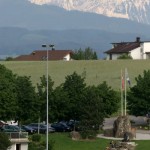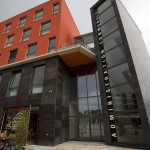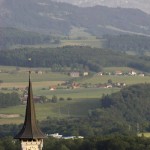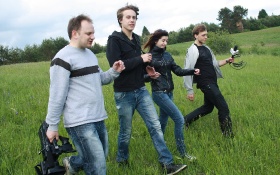We present to You our Partner Villars-sur-Glâne.
The commune
In the heart of nature, smart quarters, schools, sports infrastructure, forest paths, library, trades (from the small boutique to the huge supermarket), various cultural a sporting activity.
More than 12’000 inhabitants, 100 nationalities, 50 societies of all kinds…. And still and always a place for you !
This website is at your disposal to guide and inform you on the political and administrative organisation of our City, as well as the various communal activities, of all nature, offered to you, such as sports, culture, religion or other.
This website will also enable you to enter in contact with the communal representatives who will be happy to inform you or to welcome your remarks or suggestions concerning life in our City.
History of the commune (summary)
2600 years ago…
The territory of Villars-sur-Glâne was already inhabited from time immemorial. Archaeological excavation showed a fortified site and the tomb of an important prince dated of the VIIth centutry before Christ. The objects found in these neighborhoods proved a passage by waterway through the Sarine, the Aar and the Rhine. The territory was considered as an important merchant passage between the North and the South.
… to Villars-sur-Glâne
The name of the commune officially appears in a document dated 1143. It has been modified across centuries and was definitively settled in 1789. It belongs to an influent noble family whose existence is related from the XIth to the XIVth century.
The territory used to be quite broad and included parts of what is now the town of Fribourg. Gradually, parts of the territory were detached from Villars-sur-Glâne and given to Fribourg as the town had to expand.
Several battles were held in Bertigny, strategical point, and Cormanon, between the troops oft he cantons of Bern and Fribourg, as well as other armed conflict with Vaud and the Savoy family.
The commune has been and still is an unescapable passage with broad road axes : three cantonal roads, leading to Bulle, Romont and Payerne, the motorway AI and the railroad line Genève-Romanshorn cross the municipality.
The population
Till 1950, Villars-sur-Glâne was mainy an important agricultural commune. Industry implanted in the years 60 and the population of the City of Fribourg emigrated progressively here to acquire real property, as land was accessible. At that rhythm, new quarters have developed (Moncor, Villars-Vert) and the population has increased considerably. In the past twenty years several buildings were erected and the population doubled within no time.
Parish church of St Peter and Paul
Before being a commune, Villars-sur-Glane was a Parish. The church history is therefore in narrow connection with the one of the commune. The actual church was built in 1914, in modern Roman style. It has three bells, the smallest is supposed to be the oldest of the canton! The church was restored since, the last time in 1993.
The Glâne bridge
Built in the years 1853 to 1858, it is 53 meters high over the river and 178 meters long with a width of 9 meters. The base is in Tuff stone whilst the rest of the building is in stone of molasse.
The bridge and chapel of Sainte-Apolline
The bridge one can see now, in Tuff, dates from the 17th century, however there were several ancient bridges before. A first stone bridge is known to have been built in 1508/1509, certainly after several wooden bridges were erected there.
This bridge is on the route of pilgrimage to St Jacques of Compostelle. The chapel appeared for the first time in 1147 ; it was rebuilt in 1566 and restored in 1943. It is dedicated to Sainte-Apolline as decayed teeth were found in the surroundings and because Sainte-Apolline, who was burnt in Alexandria after having had her teeth pulled out, is implored in case of toothache.
© Mirages photo – Keren Bisaz









